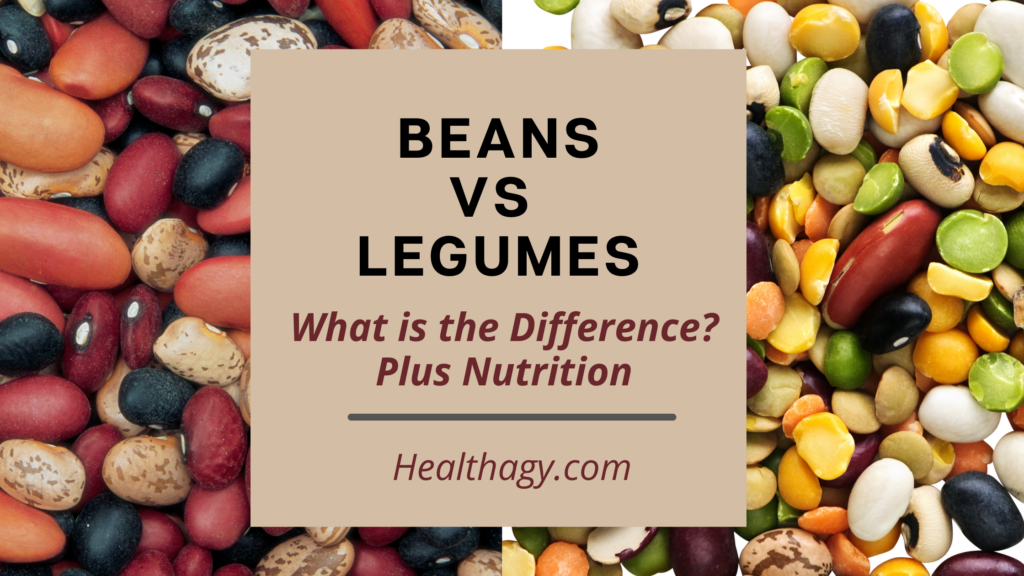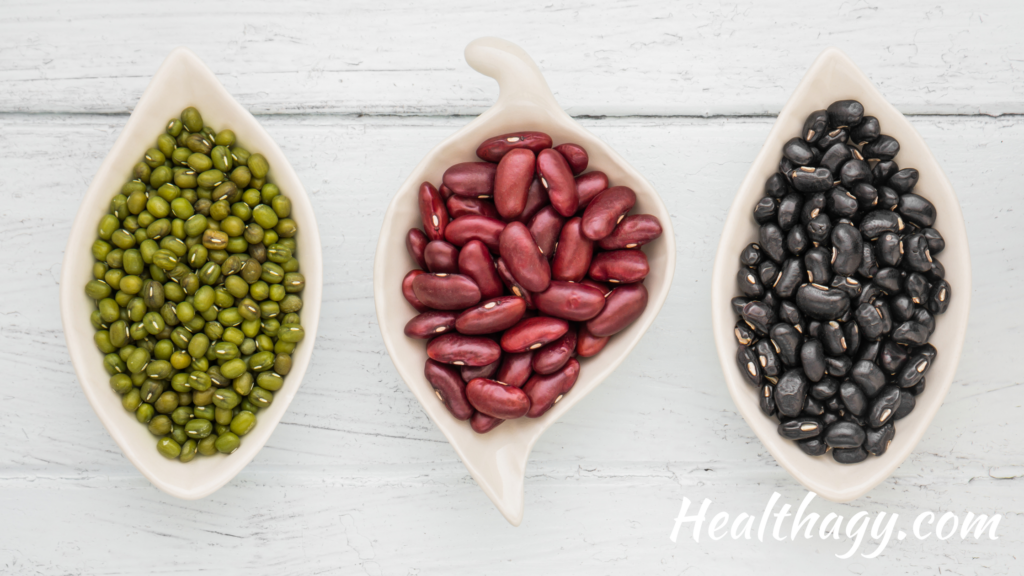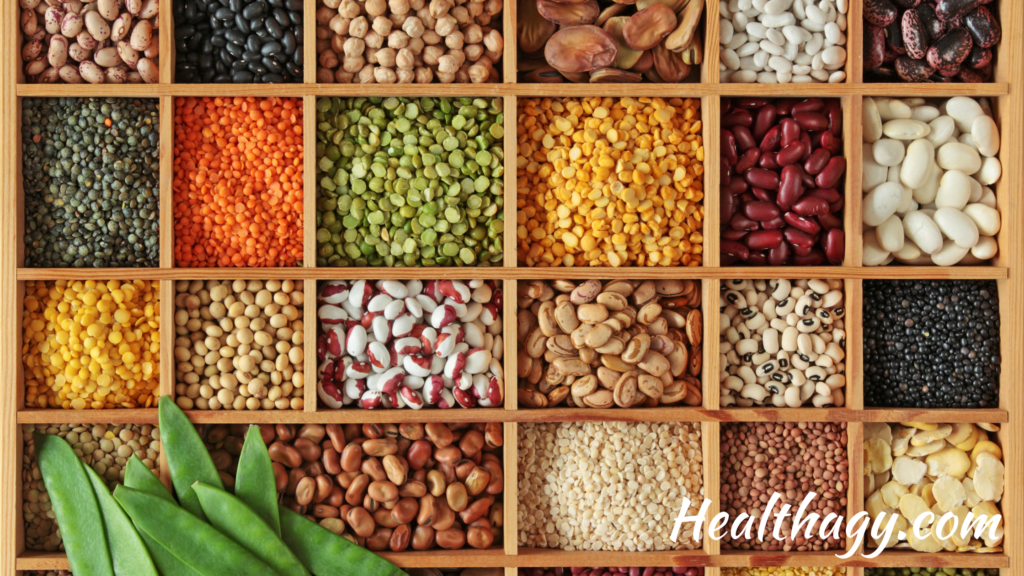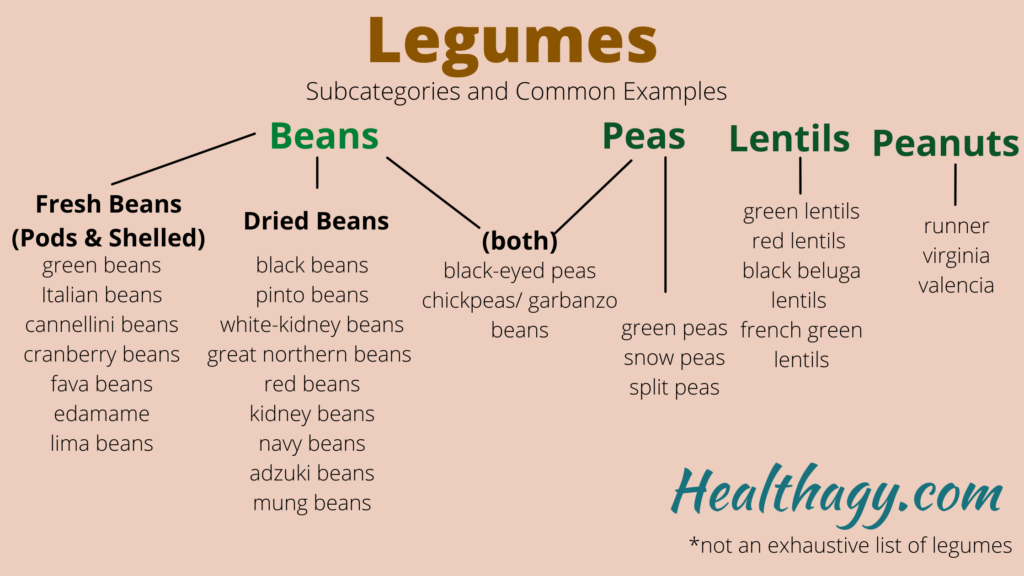
Beans and Legumes are two great sources of plant protein. I often hear and read about them together as if they are the same, but are they? What are the differences between these two and is one more nutritious than the other? Let’s dive into all that and more in this blog post!
Beans vs Legumes Key Similarities and Differences
Beans are a type of legume. Legumes are the umbrella category, beans are a subcategory of legumes. Many legumes grow in a pod. Beans are the seeds within the pod. Legumes include beans as well as peas, lentils, and peanuts. Beans and legumes are great sources of protein, fiber and several other nutrients.

What are Beans?
With well over 400 different types of beans in the world, what makes a bean a bean? Beans are part of the legume family. Beans have a pod with seeds inside them. The edible pods and the seeds of the plant are both called beans. Some beans are eaten with the pod and some are taken out of the pod and only the inner seed is eaten.
The majority of the beans eaten are in their fully mature, dried form. They are versatile and full of texture making them a great addition to many meals.
Common Types of Beans that are Dried:
Dried beans are the dried seeds taken from inside the bean pod. They are also called a pulse. Pulses are a subcategory that along with dry beans includes chickpeas, lentils, and dry peas.
Black beans, pinto beans, black-eyed peas, pink beans, white kidney beans, chickpeas/ garbanzo beans, great northern beans, red beans, kidney beans, navy beans, adzuki beans, and mung beans are all dry beans.
Dried beans are typically soaked before cooking, this can help them cook faster and reduce gas-producing sugars.
Common Types of Fresh Beans:
Fresh beans are commonly classified into two categories: edible-pod beans and shell beans. “Fresh” beans are often sold in canned or frozen form.
Edible-pod beans: With edible-pod beans, the beans are eaten in their entirety, pod, and seeds. The most popular and common edible-pod beans are green beans/snap beans. A few others Italian green beans and winged beans.
Shell beans: Shell beans are mature beans (or seeds), the beans inside are fresh and have not been dried, but the pod is no longer edible. A few shell beans are cannellini beans, cranberry beans/ roman beans, fava beans, edamame, and lima beans.
Nutritional and Health Benefits of Beans
Beans are rich in complex carbohydrates, fiber, B vitamins, and minerals.
Beans are an excellent source of fiber. Fiber helps support weight loss and weight management by helping you feel fuller, which may lead to less calorie intake. They are also rich in insoluble fiber, which helps promote digestive regularity.
The soluble fiber along with other vitamins such as magnesium, and potassium, all help lower blood pressure and lower cholesterol levels. Which help redcuce risk factors for heart disease and improve overall heart health.
Beans are also a great source of protein and becoming more popular as a meat alternative to make new foods such as meat-free burgers. It’s important to note though that with the exception of soybeans, beans alone are not a complete protein source being limited on some essential amino acids. Combing beans with a whole grain such as brown rice provide a complete set of amino acids.
Although different beans will provide different amounts of vitamins, minerals, and nutritional benefits; dried beans typically contain a good amount of the B vitamin folate. as well as potassium, magnesium, selenium, and iron. Some of the beans with the best sources of iron are soybeans, cannellini beans, red kidney beans, adzuki, pinto beans.

What are Legumes?
Legumes are the umbrella term under which includes beans, peas, lentils, and peanuts fall. There are over 16,000 types of legumes grown all over the world, so it’s hard to subcategorize them all. They come in different shapes, sizes, textures, and colors. Technically legumes are seeds, although they often present themselves as other foods. Let’s look at some common legumes you may be familiar with.

Common Types of Legumes
Peas: You may find some peas that are also commonly known as beans. What sets peas apart is their usage rather than their botanical qualities. Peas tend to be spherical and often sold in as dried peas. A few common peas are black-eyed peas, chickpeas, green peas, snow peas, and split peas.
Lentils: A few common types of lentils you may find are: green lentils, red and yellow lentils, black beluga Lentils, horse gram, and french green lentils
Beans: A few common beans are kidney beans, white beans, pinto beans, and edamame.
Peanuts: Technically they are a legume although they are more commonly recognized as a nut. A few common peanuts are the runner, Virginia and valencia peanuts.
Nutritional and Health Benefits of Legumes
Legumes have several health benefits including being a great source of lysine, an essential amino acid, antixidents called polyphenols, fiber and packed full of protein, while having a low glycemic index.
When it comes to plant protein sources, legumes are at the top, packed full of protein. However, they are an incomplete source of protein, missing some essential amino acids. The best option is to pair legumes with food such as whole grain rice in order to consume a complete protein profile.
Legumes, in general, tend to be low in fat, with the exception of peanuts. They are also versatile and economical, making them a great choice for many people.
Legumes contain resistant starcg as well as a high fiber content, which research has shown they may help lower blood pressure.
It’s important to mention that legumes do contain something called antinutrients. Antinutrients are compounds that can inhibit absorption of certain nutrients. The best way to combat antinutrients is to eat a variety of healthy foods. Some of the antinutrients in legumes include lectins, phytates, tannins, and saponins. Some of the nutrients these may inhibit absption of are calcium, iron, phosphorus, zinc and magnesium.
Legumes and Gut Health
In general legumes are an excellent source of fiber that is broken down in the large intestine by your gut bacteria. Fiber from whole foods helps to maintain a more diverse gut microbiome, which helps manage harmful bacteria and maintain the health of your gut.
There is some controversy around legumes and gut health in regards to the lectins in them causing inflammation and disrupting nutrient absorption. Most legumes are typically cooked in preparation for consumption. Cooking helps to reduce the lectins that legumes contain. More research in this area is needed. As always, it’s important to listen to your own body and monitor any reactions to food so you know what foods are best for you.
Key Takeaways
Legumes and their sub-family beans are a rich source of protein content and can be a great part of a balanced, healthy diet.
Karla Kueber is a Certified Evidence Based EFT Practioner and Health Coach, with a double Masters Degree in Education. She works with people to overcome emotional eating, curb cravings, and overcome resistance to eating new healthy foods. You can learn more about coaching with her here.